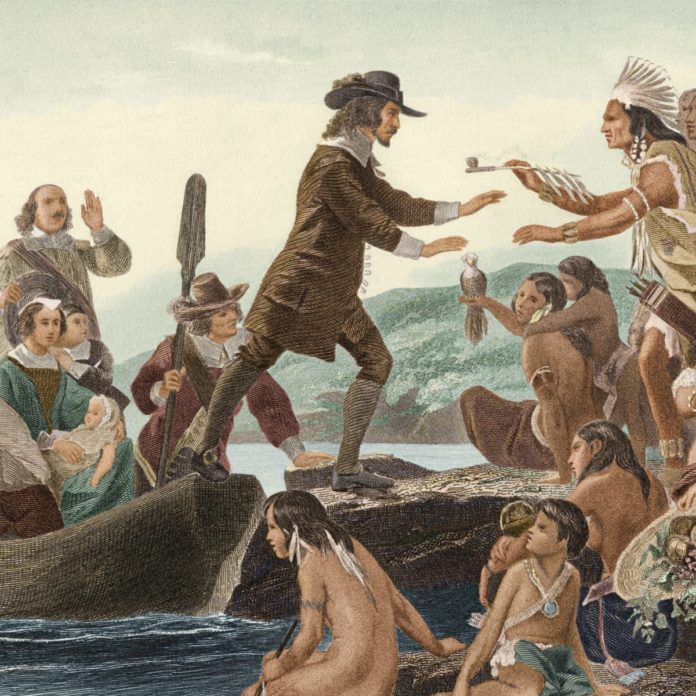William’s Root – A Brief History of Roger Williams
Rhode Island has always been a haven for nonconformists and individuals whose politics were anti-establishment. In 1636 Roger Williams and a group of his followers established Rhode Island after Williams had been banned from Massachusetts because he believed in religious freedom and the separation of church and state. Williams believed that men should be allowed to worship as they pleased and should not be compelled to conform to what others believed.
Williams also challenged the right of the King of England to grant ownership of North American lands to colonists without purchasing it from the Native Americans. The Puritans, on the other hand, thought that the Indians were savages, had few rights and devised numerous underhanded ways to gain ownership of their lands.
Williams made peace with two Rhode Island Indian sachems, Canonicus and Miantonomi. He bought land from them and founded what would become the state of Rhode Island.
Williams was an early advocate for fair dealings with Native Americans and one of the first abolitionists in North America, having organized the first attempt to prohibit slavery in any of the British American colonies.
Unfortunately, in 1675 the arrest and hanging of three Indians on what many think were trumped up charges led Metacom, sachem of the Wampanoags, who called himself King Philip, to start what became known as King Phillips War.
This war pitted colonists against Indians with whom Williams had had good relationships within the past. Williams, although in his 70s, was elected captain of Providence’s militia.
The war proved to be one of the bitterest events in his life as his efforts ended with the burning of Providence in March 1676, including his own house. More than 1,000 colonists and 3,000 Native Americans died. More than half of all New England villages were attacked by native warriors and many were completely destroyed. Several Native Americans were enslaved and transported to Bermuda, including Metacomet’s son and his wife.
Numerous Bermudians today claim ancestry from the Native American exiles. The war ended in August 1676, shortly after Metacom was captured and beheaded.
Williams died between January and March 1683 and was buried on his own property. Fifty years later his house had collapsed into the cellar and the location of his grave had been forgotten. In 1860 Zachariah Allen tried to locate his remains but he found only an apple tree root in what he thought was Williams’ grave.
According to the National Park Service website “Community leaders went in search of Williams’s remains. When they dug up the spot where they believed the remains to be, they found only nails, teeth and bone fragments. They also found an apple tree root. The tree root looked as if it had taken on the form of Roger Williams.
It had traveled the length of Williams’s body, splitting at the hips, bending at the knees and turning up at the feet.” Some dirt from the hole was placed in the Randall family mausoleum in the North Burial Ground.
The apple tree root became known as the Williams Root. It is kept by the Rhode Island Historical Society at the John Brown House Museum.
In anticipation of the 300th anniversary of Providence’s founding, the dirt was taken from the mausoleum, placed in an urn, and kept at the Rhode Island Historical Society until a proper monument was erected in Providence’s Prospect Terrace Park.
The park is located on Congdon Street in the College Hill neighborhood of Providence. The actual deposit of the dust from the grave of Roger Williams did not occur until 1939 when the WPA finished his monument.
The monument was built after Williams’ descendant, Stephen Randall, made a deed of gift. The approximate 15-foot tall granite statue commemorates Williams’ founding of the state of Rhode Island and his promotion for religious freedom. The statue depicts Williams gazing over the city.
Roger Williams was one of the most remarkable men of his time and of any time. Many of his ideas about the separation of powers between church and state influenced the writers of the US constitution and are still debated today. It seems incredible that this great man’s house would be allowed to fall into ruin and he would be forgotten as was his grave for almost a hundred years.
The reason the apple tree root took on Williams’s human form is a mystery that some think could be a natural phenomenon but others believe borders on the supernatural.












